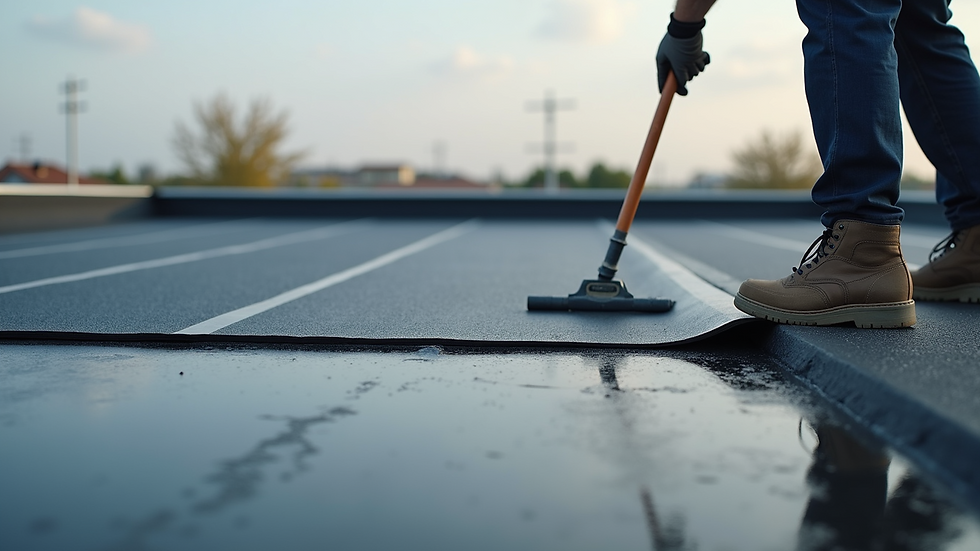Comprehensive Roofing Solutions Tailored to Your Needs
- cvqualitybuilders
- Jul 1
- 3 min read
When it comes to protecting your home, your roof is your first line of defense. Over time, roofs can wear out due to severe weather, aging, or other factors. This is why finding comprehensive roofing solutions that are tailored to your specific needs is essential. Not only can a quality roof enhance your property's look and value, but it can also provide peace of mind knowing your home is well-protected.
Tailored Roofing Solutions
Every home is unique, which means every roofing solution must also be unique. Tailoring roofing solutions involves considering the types of materials, designs, and functions that best suit your home and lifestyle.
For instance, if you live in an area prone to heavy rainfall, you might consider materials that offer better drainage, such as metal roofs or asphalt shingles with enhanced water resistance. On the other hand, if you're in a sunny area, you might prefer solar reflecting materials that help reduce your energy bills. Tailoring your roofing solution starts with evaluating these factors and determining what best fits your needs.

Assessing Your Roofing Needs
To find the right roofing solution for your home, you must first assess your current roof’s condition. Is it leaking? Are there missing shingles? Maybe it has simply aged beyond its useful life.
A thorough inspection should include checking for:
Water damage: Look for leaks or water spots inside your home.
Shingle condition: Inspect shingles for curling, cracking, or missing pieces.
Debris accumulation: Check for leaves, branches, or dirt that could be causing damage.
Professional inspectors often have specific tools and expertise to spot issues that a homeowner might miss. For example, infrared thermography can detect leaks behind walls, while drones can provide overhead views of your roof, identifying areas needing attention.
Choosing the Right Materials
Once you have assessed your roofing needs, it's time to choose materials. This decision is crucial as it impacts your roof's longevity, energy efficiency, and maintenance needs. Here are some commonly used materials:
Asphalt Shingles: Affordable and easy to install, asphalt shingles are one of the most popular roofing materials in North America. They come in various colors and styles, making them versatile for different architectural designs.
Metal Roofing: Known for its durability and lifespan, metal roofing can last up to 50 years or more. It also reflects sunlight, improving energy efficiency.
Clay and Concrete Tiles: These materials are excellent for hot climates as they reflect heat effectively. They also offer a unique aesthetic appeal but can be heavier and more expensive.
Slate: This premium material adds elegance and longevity to your roof but can be costly and requires specialized installation.
By choosing the right material based on your local climate, budget, and design preferences, you'll ensure that your tailored roofing solution not only meets your functional needs but also complements your home beautifully.

Installation Considerations
Once you've settled on a roofing material, the next step is installation. Hiring a qualified contractor is key to a successful roofing project. They should have experience in the specific type of roofing you're installing and be familiar with the building codes in your area.
Consider these important aspects:
Warranty and Insurance: Always ensure that the contractor provides warranty coverage for both materials and workmanship. Verify that they are insured to protect yourself from liabilities.
Timeline: Discuss the project timeline upfront. Depending on the type of roofing, installation can take anywhere from a few days to several weeks.
Weather Conditions: The best time for roofing installation is during dry and mild weather. Rain or extreme temperatures can affect the quality of the installation.
By paying close attention to installation details, you can enjoy your tailored roofing solution for many years to come.
Regular Maintenance for Longevity
After your new roof is installed, regular maintenance is crucial to extend its lifespan. Here are some maintenance tips to consider:
Routine Inspections: Conduct seasonal inspections, especially after severe weather events. Look for loose shingles, clogged gutters, and signs of wear.
Clean Gutters: Ensure gutters are free of debris to allow proper water flow. Clogged gutters can lead to roof leaks and costly repairs.
Trim Overhanging Branches: Trees that hang over your roof can cause damage during windstorms. Regularly trim branches and remove any that could fall on your roof.
Address Problems Early: If you notice any signs of damage, such as leaks or mold, address them promptly to prevent more costly repairs in the future.
Incorporating a proactive approach to maintenance will keep your roof in top condition and help you avoid major issues down the line.
Final Thoughts
Investing in a well-tailored roofing solution is essential for the protection and aesthetic appeal of your home. By assessing your needs, choosing the right materials, hiring qualified professionals, and maintaining your roof, you can ensure that it remains a reliable barrier against the elements.
If you’re in the market for tailored roofing solutions, consider these roofing services from experienced professionals who prioritize quality and customer satisfaction.







Comments